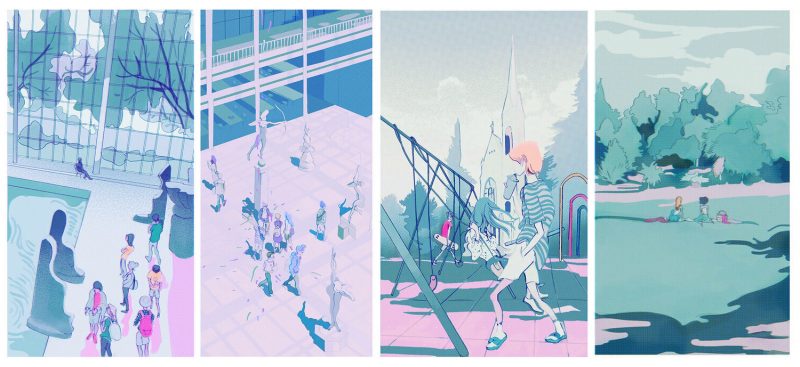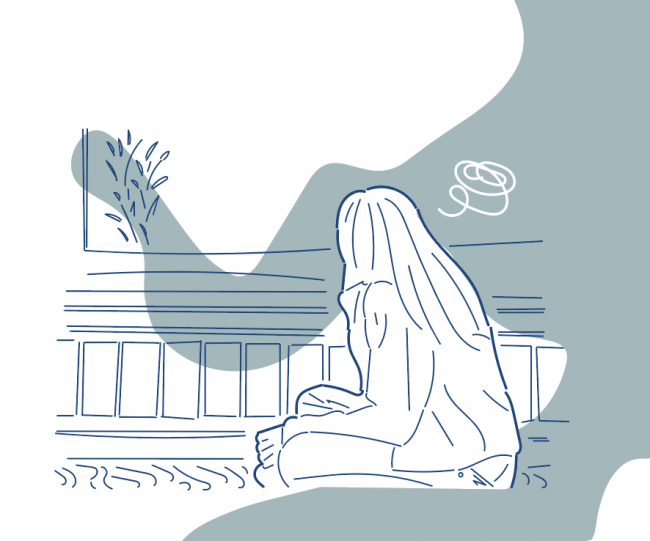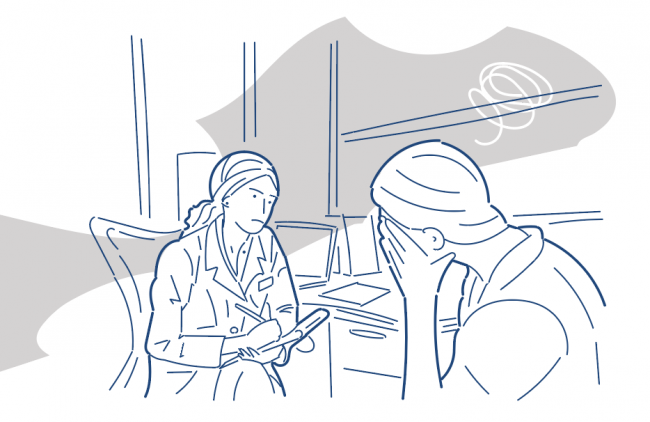Chronic Illness, Care, and the Wellness Industry
Posted on December 16, 2019
Illustration by Eve Liu
“Have you tried yoga?”
“Mindful meditation is wonderful for reducing stress.”
“But, it worked for me!”
Sometimes I jokingly say if I receive five dollars to answer these comments every time, I wouldn’t be stressed about health insurance anymore.
Of course, people who suggest yoga or meditation genuinely care about me, and I do not doubt that these activities have beneficial effects on the mind and body. Yet I am exhausted. I am tired of the appropriation and commodification of eastern alternative medicine and healing practices in Western markets. I am tired of the unregulated definition of “wellness” within this 4.2 trillion dollar business and how it causes people to recommend pseudoscience to women regularly. [1] I am tired that as a young adult living with physical and mental disabilities, people judge and tell me the “natural way is the better way.”

Illustration by Arata Shimizu
Ironically, I started to enjoy watching energy or tarot related videos on youtube. The practitioners are predominantly able-bodied, white, and educated women in western countries, who genuinely believe in their practice and how they can help their audience. [2] Through watching their videos and seeing community discussions, I understood its appeal. The wellness industry is evident in exploiting our fear of dying, ageing, and repackaging fatphobia with words like “clean” and “detox.” Yet the most potent commodity this massive community I find to provide is the sense of care. Psychiatrists and therapists are starting to learn vocabularies from astronomy and tarots because they offer vocabularies for patients to express their emotions and feelings. [3] In a sense, I find this usage of tarot cards similar to the card games we consistently create and use within design. Increasing transparency and building more in-depth doctor and patient relationships are many healthcare designer’s foci. If there is an existing card vocabulary system that people are picking up, there is definitely value in learning or possibly implementing it.
Millennials are now recognized as the therapy generation, and we hold the agency in changing the mainstream discourse of mental health and what it means to care about ourselves genuinely. The millennial obsession with pop-psychology and self-care culture reflects the lack of care and acknowledgement we receive in medical care. From the stigmatization of psychiatric treatment to the lack of emphasis on women’s pain, My “illness buddies” and I have experienced varying levels of neglect, humiliation, and harassment from service providers. [4] With a malfunctioning healthcare system that overlooks the qualitative aspects of medical care, especially women-specific needs, I find it natural that women are exploring the self-care industry for alternative ways of getting better. Who wouldn’t want a personal yoga session where someone gives an hour of their time solely for you, giving you affirmation and personalized care based on your needs? [5] Yet how can we design a system or service that makes us feel equal, normal, accepted and not individuals who desperately need fixing?

Illustration by Arata Shimizu
During my early post-diagnosis days, I did try “less invasive” ways of treatment. The results made me understood they are ineffective for my condition. Some can even make my health worse. Despite having a hectic experience, I can’t leave the current medical system because they provide the care that I need, and there aren’t alternative options. My position made me realize, despite emphasizing on concepts like female empowerment and body acceptance, both the wellness and medical industry rarely talked about disabilities within younger adults. I wonder, is it because within these intricately constructed systems of care and optimization, I am too young to be this sick? I see an opportunity for us to explore the diverse lives with chronic illness. How wonderful would it be if we can create a service environment that protects its users from exploitation, rather than being the perpetrators of exploitation?
My journey with my health conditions is continuing, and I don’t think it will end anytime soon. Maybe it will never end, and that’s ok. For me, to be well is to have clarity about my health. It is to gain more agency in ways of taking care of my mind and body. To achieve wellness and self-care isn’t to be happy, it is to have vitality. One needs to define wellness for themselves, not blindly following the unregulated definition created in the capitalist market.
-Y.T